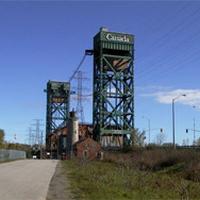A government planning body has overturned a local decision ordering National Highways to remove infill from a historic bridge.
In October, West Norfolk Council planners refused National Highways’ application for retrospective permission for 2021 infill work on Congham Bridge in the east of England (link opens in new tab).
The bridge features curved wingwalls and was built in the 1920s by William Marriott, engineer of the Midland and Great Northern Railway. It carries a country road over a railway line that was closed in 1959.
The Heritage Rail Group, an alliance of walking, cycling and heritage campaigners, engineers and greenway developers, opposed National Highways’ application. They argued that the foam concrete and engineering infill should be removed and the bridge maintained.
National Highways, the government company responsible for highways and A-roads in England, appealed the decision, taking it to the UK government’s Planning Inspectorate.
After a public inquiry this week, involving 3,000 statements and pieces of evidence, the inspectorate found in favour of National Highways.
In her decision, planning inspector Laura Renaudon acknowledged the case was finely balanced. She said she regretted the harm to the value of the heritage asset, but balanced it against its “overall low significance” and the fact that it is preserved, although buried. She added that the infill maintains the bridge’s loading capacity so that it can accommodate farm traffic. She also said that it engenders public confidence in the highway, and has removed a focus for antisocial behaviour.




